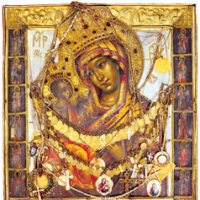Patriarchate of Peć
Patriarchate of Peć
The Patriarchate of Peć is situated at the very entrance to the Rugovska Klisura gorge, not far from Peć. There are four churches within the monastery, built one against the other such that they now form a single whole. The oldest is the Church of the Holy Apostles, raised in the 13th century, its benefactor the second Serbian archbishop Arsenije I.
At the beginning of the 14th century, within the space of a decade or so, new churches were built on both sides – on the north side the Church of St Dimitrije, on the south side the Church of the Mother of God, and against this church the small Church of St Nicholas. To the west side a narthex was added.
A complete history of mediaeval wall painting styles can be seen on the walls of the church. The oldest frescoes are found in the area beneath the dome of the Church of the Holy Apostles (13th century). The frescoes in the narthex were painted in a number of stages over the period from the 14th to the 18th century. Immediately by the entrance is the depiction of the Nemanjić dynasty family tree.
The church of St Dimitrije houses the monastery’s treasures, with numerous icons, manuscript books and silverwork. The icons came from the iconography workshop of Peć, which was particularly active in the second half of the 16th century. Within the church, marble sarcophagi house the relics (bones) of Peć archbishops and patriarchs. Because of their ornate sculpture these sarcophagi are valuable works of art.
The Patriarchate of Peć monastery has been entered into the UNESCO World Heritage List under the common name of Mediaeval Monuments in Kosovo (Serbia). As of 2006 it has also been entered into the UNESCO List of World Heritage in Danger because of the unstable security situation currently prevailing in Autonomous Province of Kosovo and Metohija, which is currently under the administration of UNMIK (the UN Interim Administration Mission) The monastery can only be visited under the military escort of KFOR troops.
INFORMATION



Comments
Leave a comment